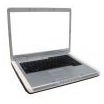Pros and Cons of M-Learning
Introduction
Professionals engaged in online educational activities will agree that the concept of e-learning started during the penultimate decade of the previous century, when desktop computers alone were used. E-Learning is a subsect of distance learning, in that students aren’t necessarily in a traditional classroom in order to participate in school activities.
The term M-Learning stands for mobile learning, which refers to learning with the aid of handheld technology like mobile phones, laptops and any other similar portable devices which are handy.
As with distance and e-learning, there are many advantages and disadvantages of letting technology take a complete hold of one’s education.
Modes of M-Learning
M-Learning is characterized by the ability to learn through portable devices. Technology has continued to play a pivotal role in
teaching and training, though mobile technologies and devices have their own share of advantages and also disadvantages. There are many different types of m-learning -
- Communication through SMS between two mobile phones, whereby one can send or receive text messages of 160 characters.
- Extended form of SMS – MMS (Multi-Media Messaging Service). In this technology, text messages and graphics both are included.
- WAP enabled mobile phones that can access the Internet through deploying protocol of international standard.
- Personal Digital Assistant (PDA) devices that function like mini PC compatible machines, like Palm OS or Pocket PC Mac OS.
- Bluetooth facilitates PDA message sharing from one mobile device to another.
- MP3 file format for compression and sharing
- PDA CAMs
Experts prognosticate that in the foreseeable future the markets will have 4G phones (4th generation mobile phones) capable of 100 megabits per second in multi-media transmissions.
Advantages of M-Learning
- One can access lessons, video clips and audio libraries from anywhere, including public places and moving buses and trains.
- Interaction with fellow students and instructors will be a great help. It is an accepted fact that learning is made easier when information is shared and questions answered through a sort of combined study. This helps several students to work together on assignments even while remaining at far-flung locations.
- Portability is a very big plus, as a PDA is compact and very lightweight, and enables a student to take notes or enter all types of data directly into the device.
- There is a psychological factor; owning handheld devices increases student motivation and deepens the commitment to using and learning with them. Further, the present generation of students has a fascination with handhelds like PDAs, mobile phones and similar carry-around devices. The learning material is mostly colorful and inviting which may prompt students to go back and forth and practice more.
- It is a fact that most handheld devices are more affordably priced than larger systems, and already a major percentage of the population owns them.
- Flexible hours of learning are indeed a great boon as students can access the system anytime 24-7 and from any location. What is more, teacher support can now be expected even outside classrooms and other learning environments.
- Each student can learn at his or her own pace - some student may be slower learners. The students who pick up things fast need not waste time going repeatedly through basic lessons.
- Yet another blessing is a huge saving in the cost of learning materials and also commuting expenses.
Disadvantages of M-Learning
- There is the definite inconvenience of size, as the student has to learn while hunched over the small screen of a mobile phone and PDA.
- There is no denying that the storage capacities of PDAs are limited.
- Anyone who has a mobile gadget knows that the short battery life and frequent changes of batteries are a great nuisance.
- Add to this the absence of a common hardware platform; this makes it extremely difficult to develop content for use by all.
- Devices may become outdated quickly and students have to keep combating obsolescence.
- There is limited wireless bandwidth and chances are that it may further decrease with the number of users ever on the increase.
- In the M-Learning venue, students are incapable of printing, simply because it requires a network connection. This is obviously not feasible in a number of real-life situations.
As a society, we have come to rely on technology to help in everyday life. M-learning is growing powerful, not just for education, but for business and personal use as well. As technology grows and gets better, we’ll discover more ways in which we can use it.
